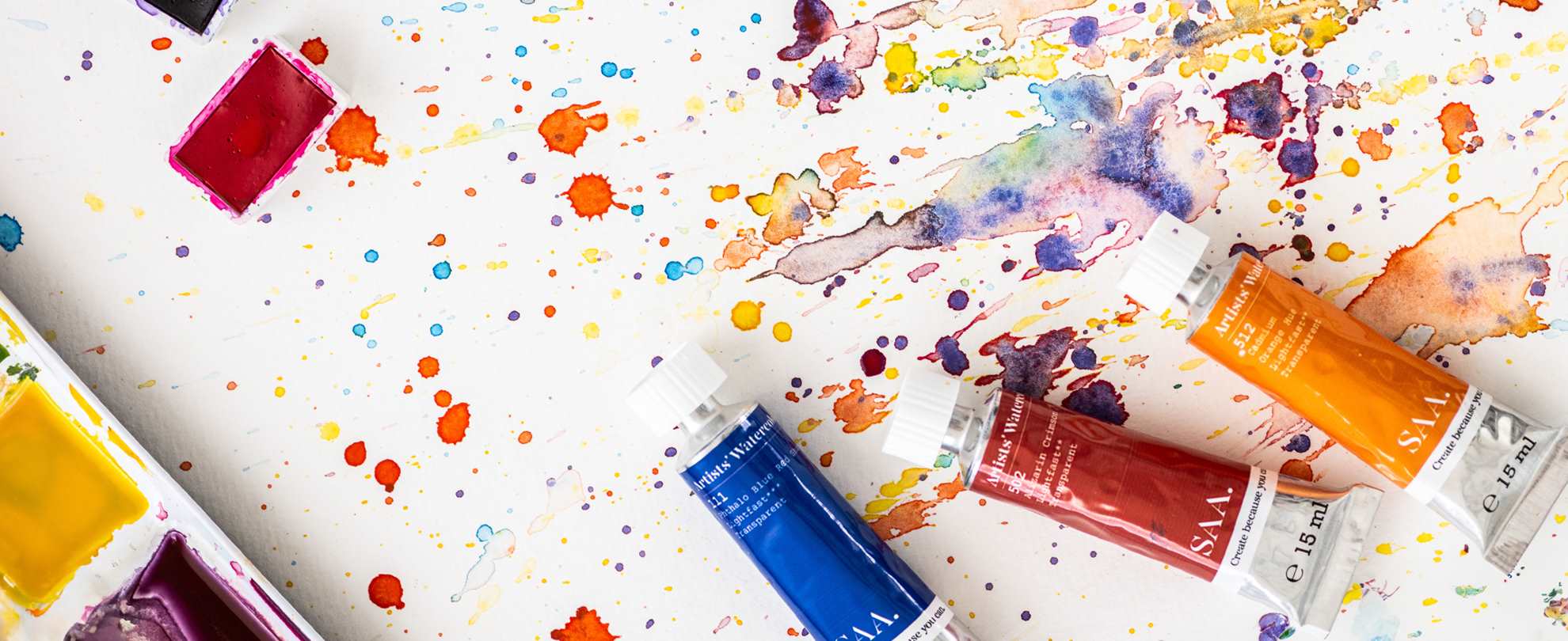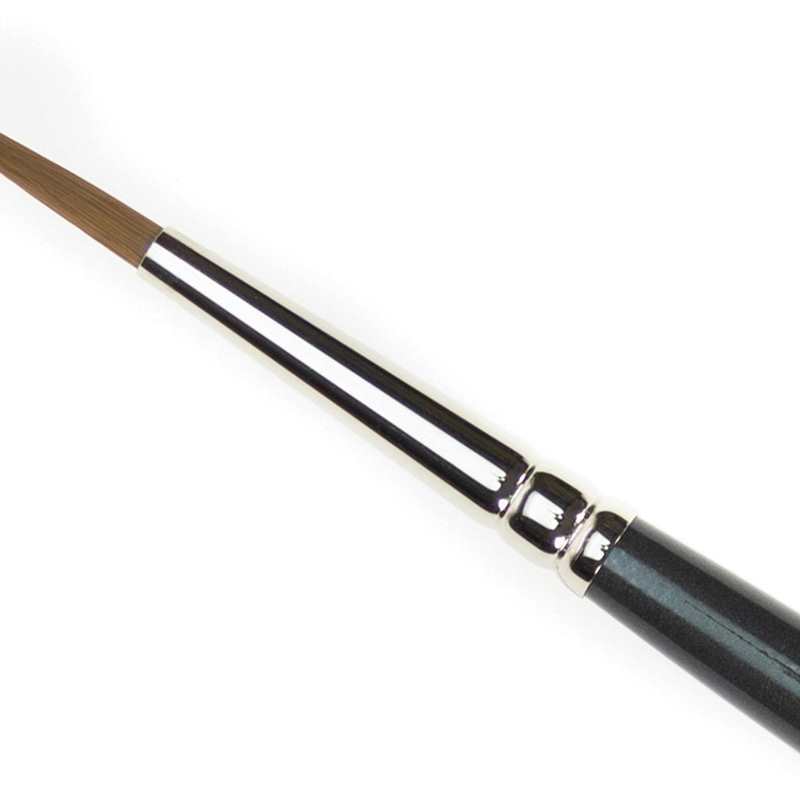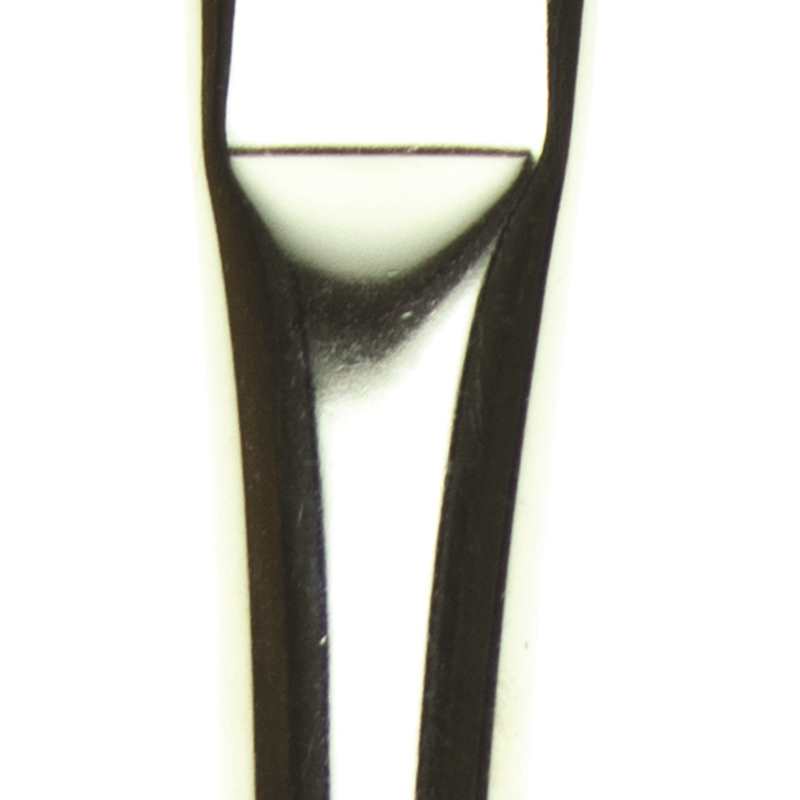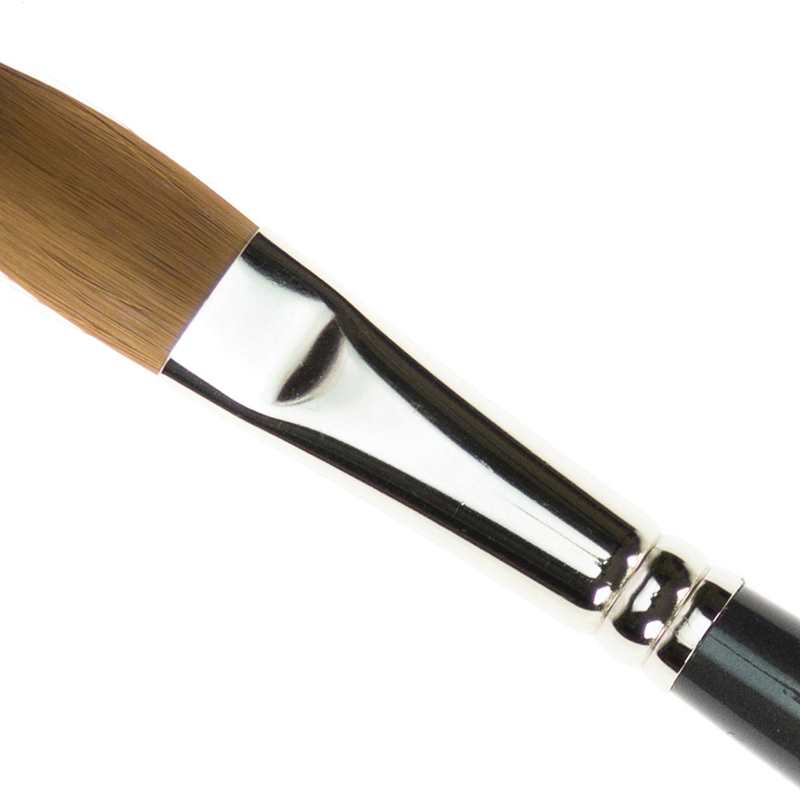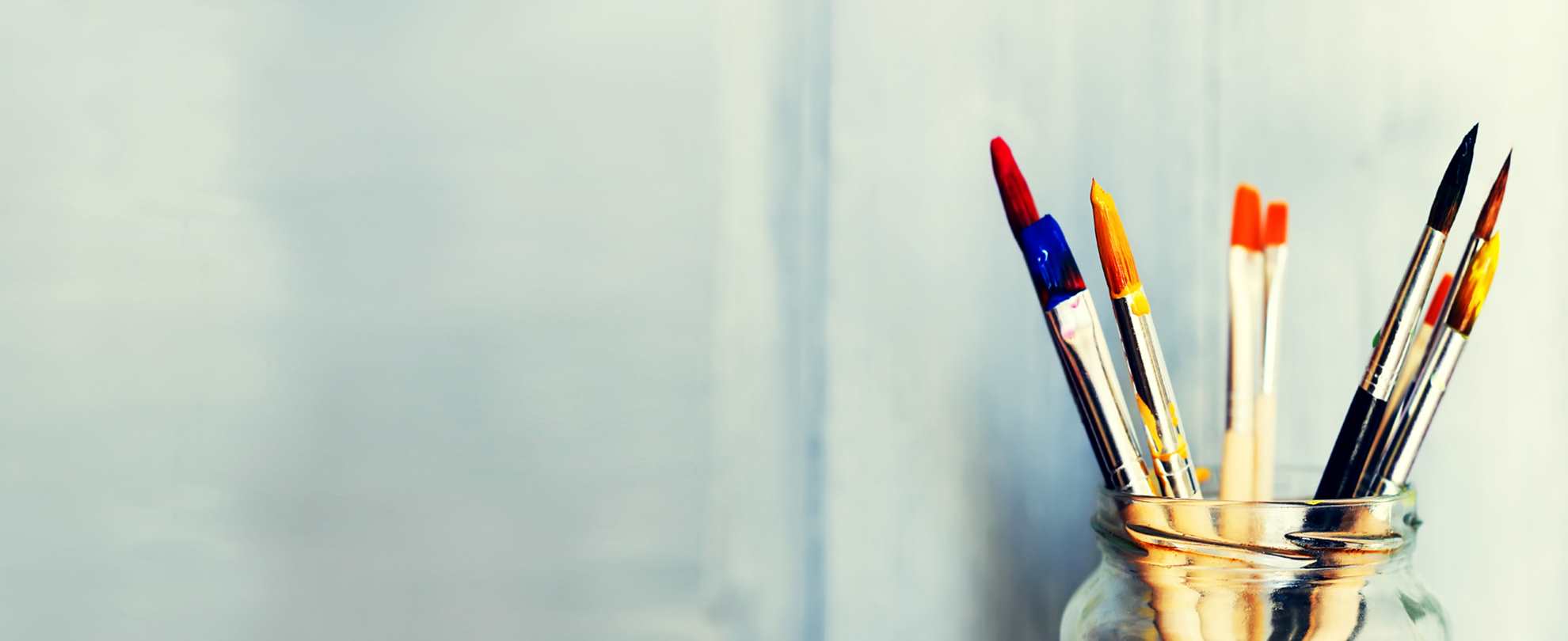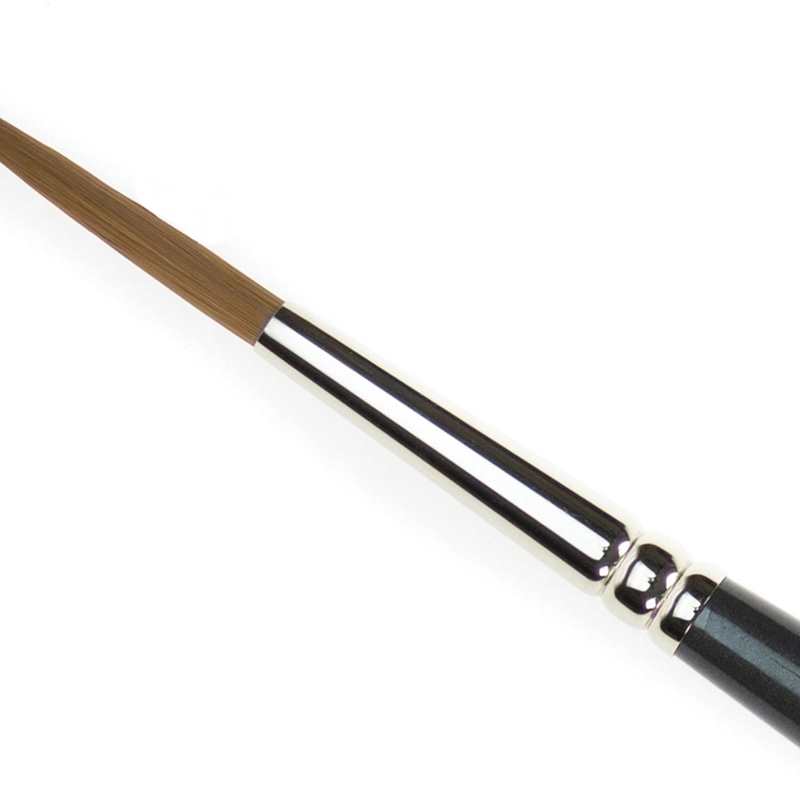

A guide to watercolour brushes
Many quality, artist brushes are made and shaped by hand to ensure a quality brush, this is not easily achieved by a machine. Watercolour brushes come in various shapes, sizes and hair types but they are usually short handled. Any brush can be used for any medium depending on the techniques and textures required. With watercolour painting, many soft, wet techniques are used so a brush which can handle the pigment and water when applied to the paper is important. This is why natural soft hair brushes are commonly used for watercolour as they have excellent for holding the water and pigment, The holding power of the hair is important as natural hair brushes absorb more pigment and water than synthetic brushes, allowing for longer application and release of paint before having to reload.
Natural hair brushes are available in many different hair types each offering a differing quality. Synthetic watercolour brushes are slightly firmer and will hold a point. They do not have the same holding power as natural hair, but a good quality artist brush will work well. Synthetic and natural hair mixed brushes offer a less expensive alternative and offer brush and combine the holding power of a natural hair brush and the control of a synthetic. Modern advances in the quality of synthetic brush hair mean that there are excellent synthetic watercolour brushes which handle like a sable.
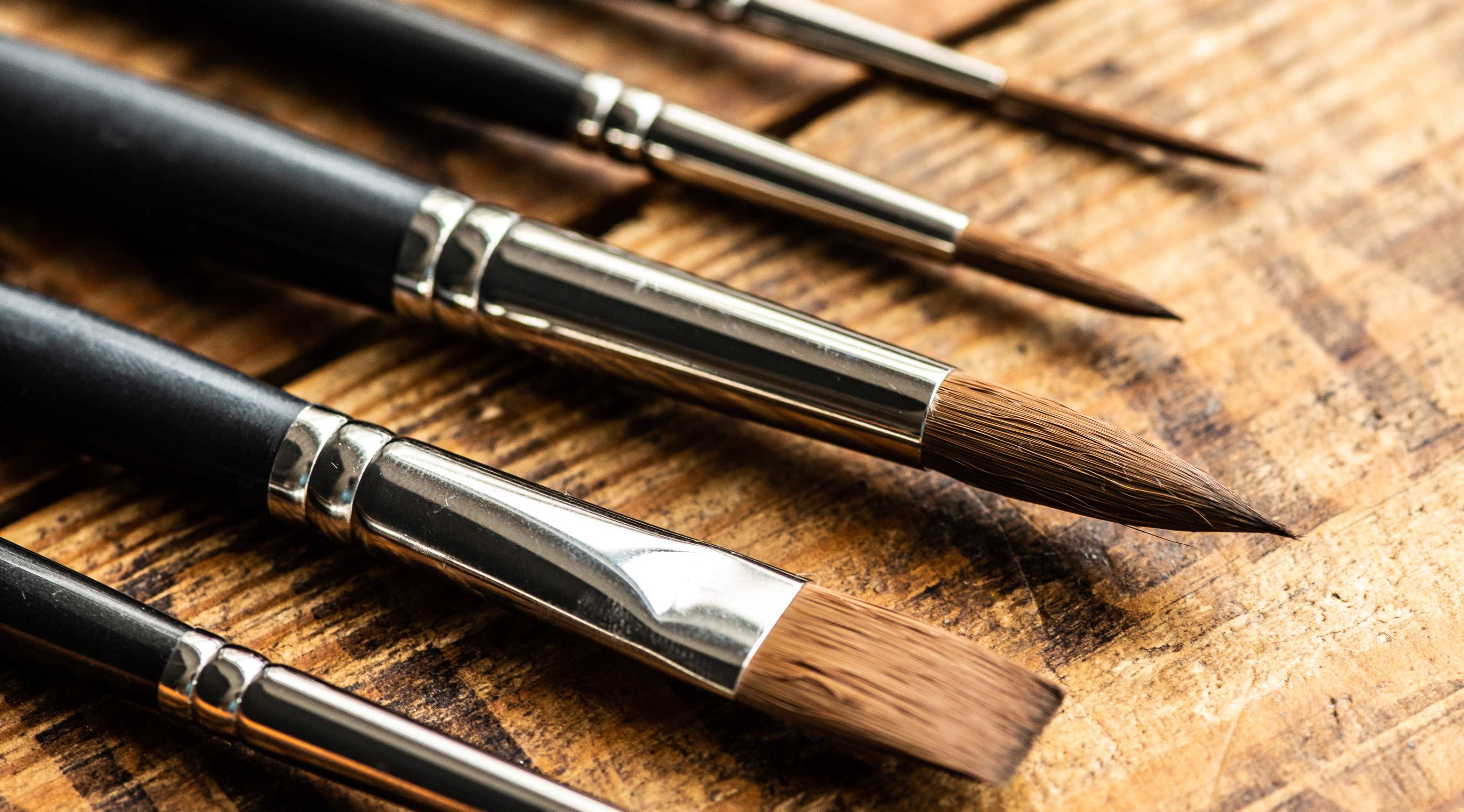

Types of Brushes
Squirrel wash brushes
Cheaper than sable, squirrel is a soft hair with little spring. Larger squirrel brushes work better than smaller ones because the mass of hairs together gives them support.
Sable brushes
The ultimate soft brush is made from the hairs on the tail of a sable marten; these taper naturally, so when they're put into a brush, they form a point. Sable brushes are expensive, but are renowned for their softness, flexibility, and fine point.
Kolinsky sable brush
Used to describe some of the top-quality hair sable and comes from the tail of a mink that ranges across the north of Europe and Asia. Kolinsky sable from Siberia has traditionally been considered the best hair for watercolor brushes. Sable brushes are expensive, but are renowned for their softness, flexibility, and fine point A good quality brush is essential for water colour painting; it needs to hold a good quantity of water and spring to a point when wet.
Camel
Brushes labelled 'camel' hair are really made from other types of soft hair. Camel hair is unsuitable for brushes because it's too woolly. The name comes from Mr Camel who developed this mix of low-grade natural hairs.
Ox
Long, strong and springy hair.
Pony
Coarse hair that doesn't form a good point. Often used in cheaper brushes
Goat
Lacks spring but forms a good point. Used in calligraphy and Chinese Brush painting.
Mongoose
Theses brushes have good snap and are long-lasting. The have a spring halfway between a sable and a bristle.
Badger
Thicker at the root and thinner at the point gives these brushes a bushy appearance. A stiff brush often used as a blending brush.
Synthetic
These brushes are usually made from a polyester fibre and are great option for all mediums. These tend to be a little firmer, than natural hair brushes and hold their point well making them easy to control or for finer details These are different qualities of Synthetic brush, and the less expensive brushes are not as durable and can lose their shape quickly whereas the fine artist quality brushes will hold their point and allow for great handling and application. Due to modern developments in technology synthetic fibres are used to mimic the spring and softness of natural hair and can rival the stiffness of bristle.
Imitation Sable
These are synthetic brushes which have been carefully manufactured to offer many of the holding and handling qualities of a natural sable brush
Synthetic Mix
These brushes are made by combining animal hair and synthetic fibre which gives a less expensive alternative to sable, but it has very similar properties. Synthetic mix brushes usually hold less paint than natural hair brush but there are many excellent synthetic and synthetic/ sable mix brushes available
Travel brushes
There are different types of Travel brushes or pocket brushes which are designed to be small but practical brushes made to fit into a pocket of small traveling palette. They can be smaller, short brushes which fit into a small travel palette, or the collapsible travel brush uses the cap to extend on to the handle creating a fuller sizes brush which is easier to handle. The cap is used to help protect the hairs for travel and some will have a hole in the end so the brush can be put away while wet without and allow the hair to dry out properly. There are also less common retractable versions which the hair is retracted back into the handle creating a shorter brush an protecting the hair.
Waterbrushes
A convenient travel brush made from plastic with synthetic bristles brush and have an empty barrel as a handle. These are fun and simple to uses as the barrel can be filled with water, and the water filleted down into the hair giving a constant flow of water meaning you can just use the brush with a paint without having to dip into a container of water. More water can be released by squeezing the barrel.

Brush Shapes
Round
Round closely arranged bristles with pointed ends. Good for general use and versatile brush, ideal for washes and details. All the round brushes should be able to product a fine point as well as being able to create a good wash. The brush sizes can range from very tiny fine detail brushes size 0000 to a larger size 40.

Flat
These are broad, flat, square shaped brushes which, are good for applying larger areas of colour. They can also be used the make linear brush marks by using the side or end of the brush. The brush sizes can range from 1/8 inch (3mm) to 2 inches (5.1mm) wide. Some fat brushes have shorter hair and these are called Bright or Short flat they look the same as a flat brush but with shorter bristles, therefore, making them stiffer.

Filbert Brush
This is a flat brush with a domed end and allows for good coverage.

Rigger Brush
This brush head consists of long narrow hairs. A rigger is usually used to create straight lines, as it maintains a fine tip throughout a long narrow brushstroke - this is sometimes called a writer or scribe. It is called a rigger because they were developed to do rigging on boats in nautical paintings. These are available in varying sizes and can come in varying lengths.

Fan
As the name suggests it is a fan shape brush – used dry it is perfect for trees and grasses. Also good for blending colours or softening edges.

Mops
This is a large floppy version of the round brush. Because of the floppy nature of the brush, it holds a lot of water and promotes loose and lively brushstrokes. Good for a wash and blending oil colours. These can come in a selection of shapes from a rounded tip for soft blending or flat wash to a shaped brush with a fine point.

Quill brushes
These are also called mops, but they are shaped and have a fine pointed tip. They are constructed from a sable, squirrel or synthetic fibres and are hand tied with brass wires onto a wooden handle instead of inserted and crimped into a metal ferrule. These can be made for genuine goose quill ferrule or plastic which is hand tied with brass wires onto a natural wood handle. These are excellent for wet washes as well as fine mark making.

Wash brush
These are a little wider than a flat brush and are used to apply washes. These can range from 1 inch (2.5mm) to quite large sizes.

Hake brushes
These are made of Hog Hair and are mostly used for this purpose but other wash brushes are available. With large broad wooden handle, made with extremely fine soft hair often made of goat’s hair. Ideal for washes.

Chisel brush
These are a flat brush which is angled to one side.

Stippler
A stiff brush which can be shaped with a flat top or angled. Used dry in a dabbing technique it can be used for grasses, hair and texture.

Sword
A brush shaped like a sword or a dagger. It can be used for painting grasses and reeds, and also for floral painting. For best results hold the brush with the blade away from you and the end of the brush pointing down and then flick upwards. The dagger is a smaller version of the sword.

Rake/Comb
These brushes have varied lengths of hair which are ideal for grasses and fur.


Hints and Tips
- Cleaning your brushes thoroughly after each painting session will ensure a long life for your brushes. For fine hair, such as Kolinsky & Red Sable, rinse in cold water. Remove as much moisture as possible with kitchen roll and reshape before storing.
- All brushes need to be cleaned before storing. After cleaning a brush should be hung upside down or lay flat to dry. If the brush dries standing up the moisture will drain towards the ferrule and handle and weaken the epoxy glue holding the hair in place and can be absorbed into the handle causing the paint to crack.
- Clean and dry your brushes after use and re-point the bristles. All pigment should be removed. A build-up of paint residue in the ferrule is one of the reasons the brushes become disfigured.
- Do not leave the brushes resting down in the water container as it will damage the shape of the brushes. Sometimes the brushes become waterlogged and paint on the handle cracks and chips. The most common reason for this is leaving the brushes in the water for a length of time.
- Try to keep handles dry, to prevent them from loosening and cracking. When you dip the head into the water, try to keep the water level below the crimping and only wet the ferrule.
- Using a good artist's brush cleaner will help preserve the life of the brush. These are important when cleaning your brushes as they are designed to remove pigment. Degrease and condition the hair. They are available in liquid, solid or soap form.

Watercolour Brush FAQs
-
When a brush arrives from a manufacturer, they frequently have a beautiful point on them. This is due to a size of a weak solution of Gum Arabic being applied. It is important to remove this size using warm water before use. After the brush has been cleaned and dried most brushes will appear fluffy - some more than others – e.g. mop brush
Do not worry as the brush will regain its a point as soon as it is wet.
Tip- When wet if you give the brush a quick flick with your wrist the hair should go into a point.
-
The most common disfigurement of brush heads comes from leaving the brush head down in cleaning solution or they are not stored correctly and are squashed against the side of the container. Natural hair is more forgiving than synthetic and can be more easily retrained to its original shape.
To straighten the bristles quickly dip them in boiling water and store them upright or ensure that the bristle end of the brush is protected. Only dip the hairs up to the ferrule.
NB Be aware that using hot water can expand the ferrule and cause the hair to fall out.
-
Modern synthetic brushes are excellent and have the advantage of being cheaper than natural hair. Purists will tell you that no synthetic fibre can beat a Kolinsky sable, considered the ultimate of soft hairs because of its flexibility and strength, which give an artist great control. The greatest benefit of natural vs. synthetic is its absorbency- natural hair will hold the most water and colour. Whereas a synthetic will hold its point for finer details. It will be personal preference and style that dictates which type of brush you use.
-
Historically oils or acrylic painters stand away from the canvas with a long handle brush on a vertical easel. While a Watercolourist sits, and paints closed on a horizontal surface using a short, handled brush so the usual rule is that oil/acrylic brushes are usually long handled and watercolour/detail brushes are short handled. This does not mean that you cannot use a short handle brush when working at an easel. Find a brush that works for you.

